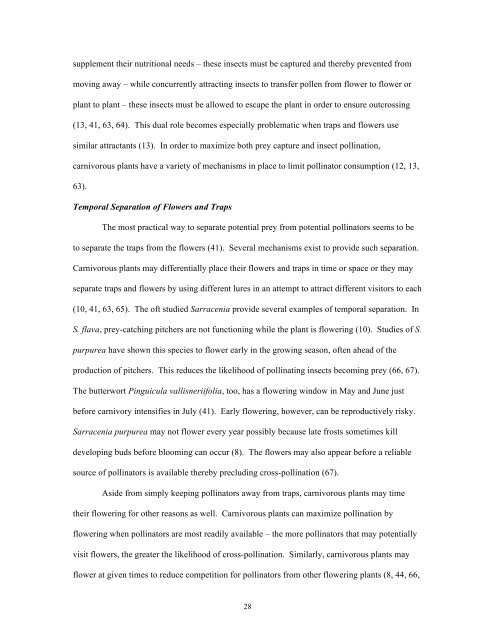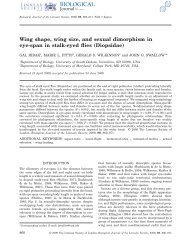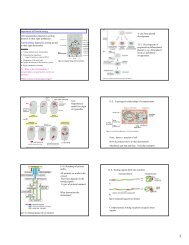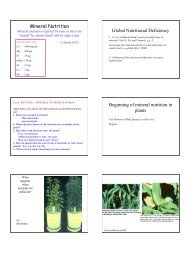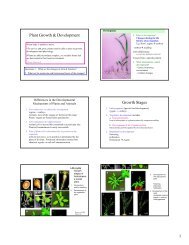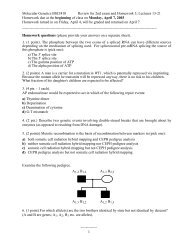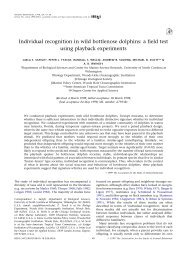Carnivorous Plants and Their Prey
Carnivorous Plants and Their Prey
Carnivorous Plants and Their Prey
You also want an ePaper? Increase the reach of your titles
YUMPU automatically turns print PDFs into web optimized ePapers that Google loves.
supplement their nutritional needs – these insects must be captured <strong>and</strong> thereby prevented from<br />
moving away – while concurrently attracting insects to transfer pollen from flower to flower or<br />
plant to plant – these insects must be allowed to escape the plant in order to ensure outcrossing<br />
(13, 41, 63, 64). This dual role becomes especially problematic when traps <strong>and</strong> flowers use<br />
similar attractants (13). In order to maximize both prey capture <strong>and</strong> insect pollination,<br />
carnivorous plants have a variety of mechanisms in place to limit pollinator consumption (12, 13,<br />
63).<br />
Temporal Separation of Flowers <strong>and</strong> Traps<br />
The most practical way to separate potential prey from potential pollinators seems to be<br />
to separate the traps from the flowers (41). Several mechanisms exist to provide such separation.<br />
<strong>Carnivorous</strong> plants may differentially place their flowers <strong>and</strong> traps in time or space or they may<br />
separate traps <strong>and</strong> flowers by using different lures in an attempt to attract different visitors to each<br />
(10, 41, 63, 65). The oft studied Sarracenia provide several examples of temporal separation. In<br />
S. flava, prey-catching pitchers are not functioning while the plant is flowering (10). Studies of S.<br />
purpurea have shown this species to flower early in the growing season, often ahead of the<br />
production of pitchers. This reduces the likelihood of pollinating insects becoming prey (66, 67).<br />
The butterwort Pinguicula vallisneriifolia, too, has a flowering window in May <strong>and</strong> June just<br />
before carnivory intensifies in July (41). Early flowering, however, can be reproductively risky.<br />
Sarracenia purpurea may not flower every year possibly because late frosts sometimes kill<br />
developing buds before blooming can occur (8). The flowers may also appear before a reliable<br />
source of pollinators is available thereby precluding cross-pollination (67).<br />
Aside from simply keeping pollinators away from traps, carnivorous plants may time<br />
their flowering for other reasons as well. <strong>Carnivorous</strong> plants can maximize pollination by<br />
flowering when pollinators are most readily available – the more pollinators that may potentially<br />
visit flowers, the greater the likelihood of cross-pollination. Similarly, carnivorous plants may<br />
flower at given times to reduce competition for pollinators from other flowering plants (8, 44, 66,<br />
28


